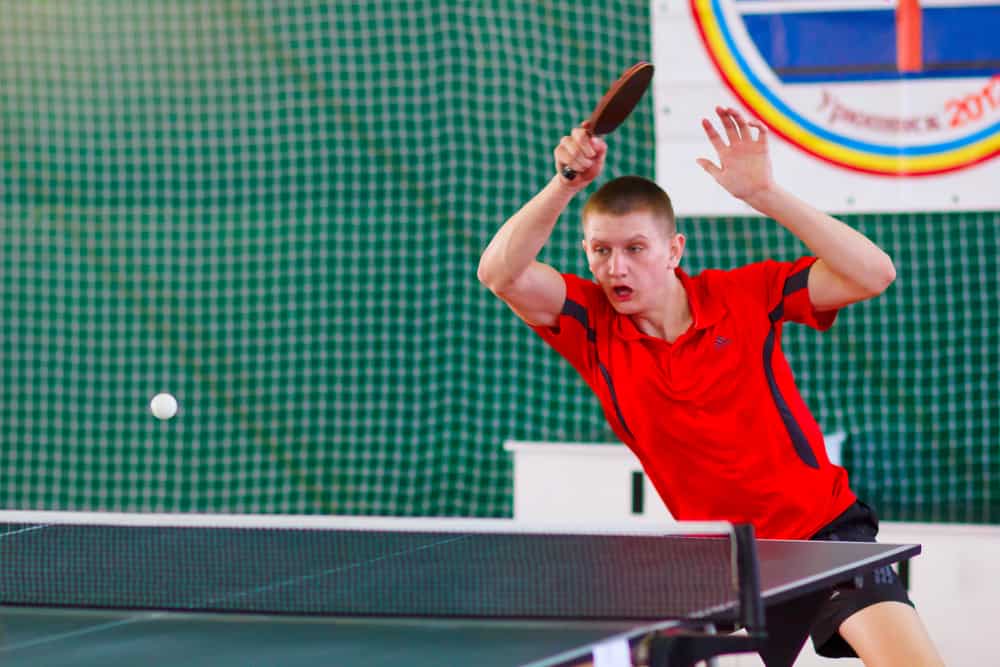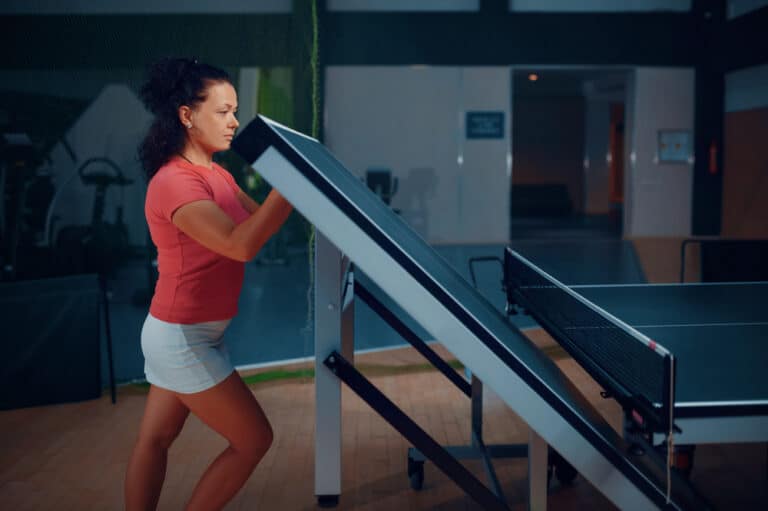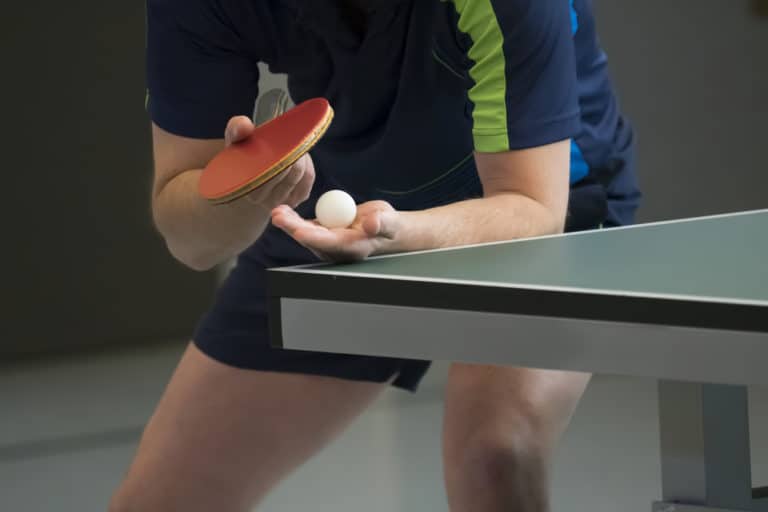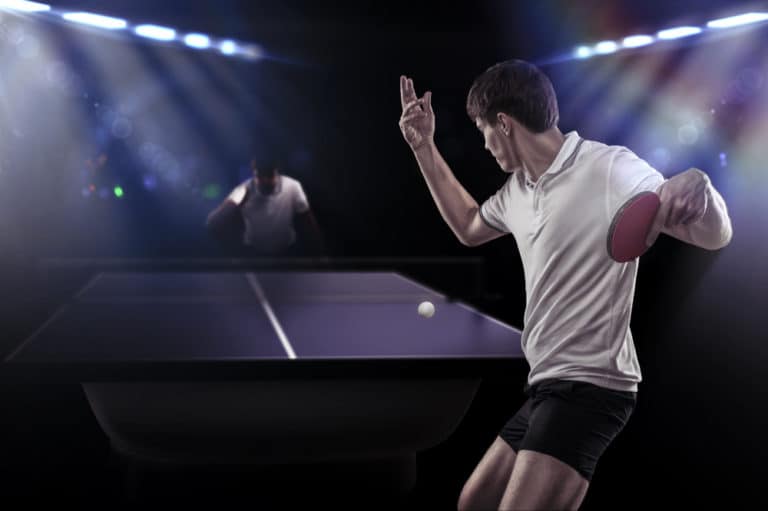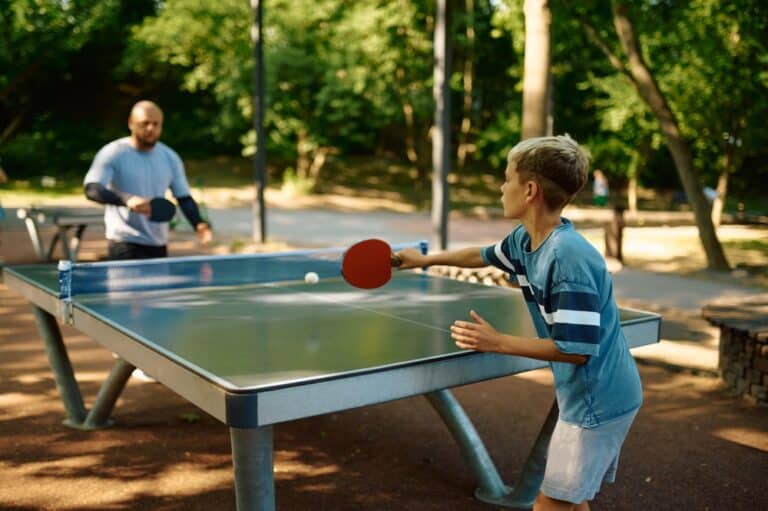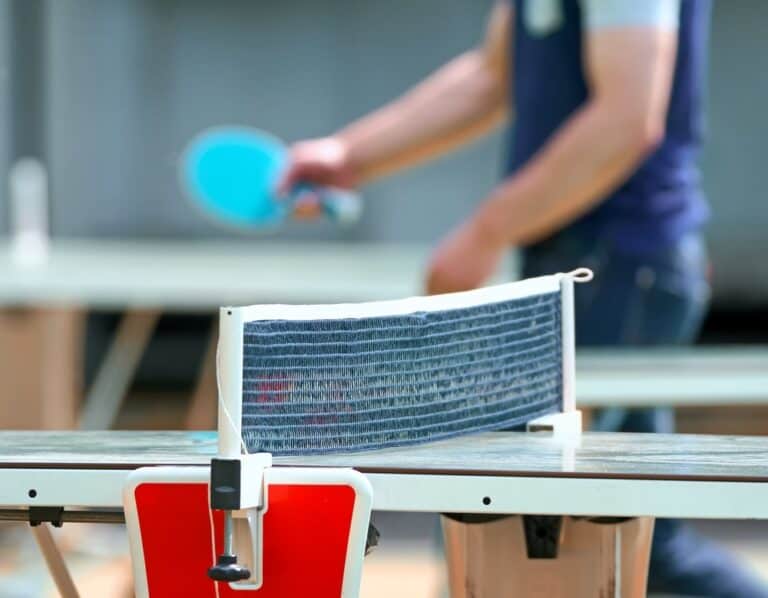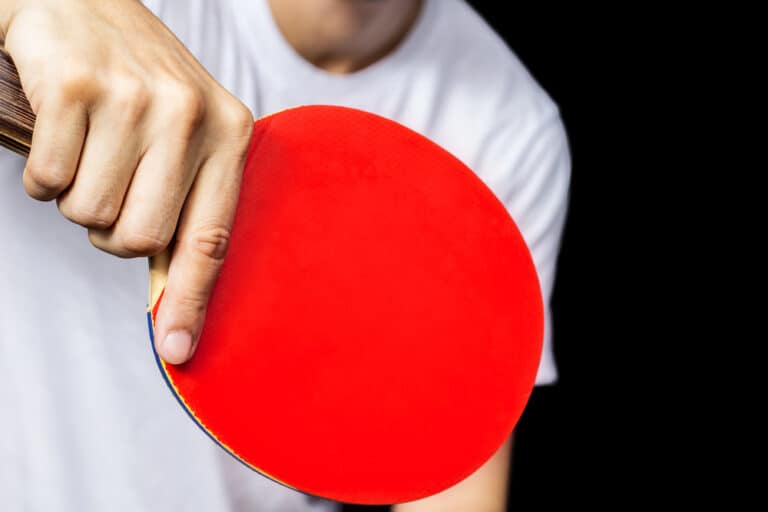How Do You Deal With Side Spins In Table Tennis?
Table tennis is a game that relies on spin more than any other racket sport. It can excite spectators while also frustrating opponents. Sidespin, if not countered, can cause the ball to exit an opponent’s paddle at incredible angles. That said, in what way can you deal with side spins?
Side spins tend to curve in the air, so to deal with them, the first step is to watch and track the ball. The second step is to ensure you make good contact with the curving ball. For example, you can return with a brush stroke and take control of the ball spin or angle your bat to control the ball.
Side-spin strokes are formed when your opponent’s racket brushes against the ball in a sideways stroke motion, either left-to-right or right-to-left. As a result, it’s critical to grasp how to interpret spins, especially side spins, to counter and deal with the shot successfully. With that in mind, let’s take a closer look at reading spins and returning a side spin.
Dealing With Side Spins In Table Tennis
Sidespin serves are tough to return because the spin on the ball pushes your shot wide to the right or left. Therefore, it is critical to assess the direction of the sidespin accurately. It may appear slightly complicated, but it is reasonably straightforward.
The table tennis ball will bounce in the same direction as your opponent’s racket. For example, the ball will bounce to the right if it moves from left to right. In that same breath, the ball will bounce to the left if it moves from right to left.
Simply follow the direction of the racket, and the ball will be dragged in the same direction. So, for example, if you are receiving a side spin serve, you would be dealing with either a short or a long service; both could have side spin. So with that in mind, here’s how to deal with it.
Returning Short Serves That Have Side Spin
In short-serves, also known as low serves, you hit the short service line in front of your opponent, preventing them from hitting an aggressive shot. When returning a short sidespin serve, you have a multitude of choices. It includes:
- You can return the ball short (a touch)
- You may launch the ball a considerable distance (a dig)
- You may use your wrist to attack the ball (a flick)
To compensate for the changing spin on the ball, your racket angle and stroke movement will need to be somewhat different from the regular return shot. You won’t have to move as far under the ball if you use the pushed return (either long or short).
When approaching the ball with a flick, you may be more aggressive and move deeper into the ball – you don’t have to lift or brush it as much. Remember to change your return location according to whether the service has a left or right sidespin.
A right-handed server, for example, using conventional backhand sidespin serve, will produce a ball that likes to drift to your left on impact with your bat (towards the server’s forehand side). To counteract this, aim more towards their backhand side to keep the ball on the table. A right-handed reverse pendulum serves the same.
The second sort of sidespin is a right-handed pendulum serve. When returning these, the ball will naturally want to drift to your right (towards the server’s backhand side), so aim more towards their forehand side to compensate.
It may appear to be a lot at first, but with some practice and expertise in returning serves, you will begin to do it instinctively. Even experts claim that the automatic response to side spins came to them over time, practice and experience.
Returning Long Serves That Have Side Spin
Long serves bounce once on the opposing side of the table, usually within six inches of his endline. The focus is on surprise and speed to drive opponents into weaker returns, which the server may counterattack. When retrieving a long sidespin serve, you have two options:
- Topspin can be used to attack the ball (a loop)
- Backspin can be used to drive the ball (a dig)
When returning a long sidespin serve, you should attack virtually entirely of the time. If you play a strong loop with a lot of topspin, you should be able to overcome a lot of the sidespin that the server placed on the ball.
It’s the Werner Schlager principle: the more spin you produce on the ball, the less you worry about incoming spin. Furthermore, the topspin loop should be able to be played into the center of the table, regardless of the left or right sidespin. Pushing a long sidespin serve is a reasonably passive option that should be avoided unless necessary.
Know The Principles Behind Returning Spins
There are several forms of spin, but they all fall into three categories: topspin, sidespin, and backspin. Reading and returning spin will take some time to perfect, but once you get the hang of it, you’ll find yourself automatically making the appropriate changes. It all comes down to muscle memory!
Experts and coaches agree that you should be introduced to the three forms of spin by an experienced player or coach. Allow your partner to serve you balls with consistent spin (I recommend beginning with underspin) and try your best to return them to play. Keep an eye on how the ball exits your paddle and change your racket angle to compensate for the spin’s effect.
The angle of your racket is the most critical factor in adjusting for a spin. Shots with underspin will fall off your racket, so tilt up slightly to compensate.
Topspin strokes will rise from your paddle, while sidespin shots will fly to the side. Return a few samples of each spin type to learn how to modify your racket angle to keep your returns low and on the table.
After a few pictures, you’ll find the perfect angle and repeat it until it becomes second nature. Then, with practice, you’ll improve your ability to recognize the strength of spin-on strokes and play more precise returns.
Keep in mind that the kind of rubber on your paddle determines how much spin influences the direction of your shots, so practice returning some spin shots anytime you obtain a new paddle or replace your rubber.
In the end, nothing beats practice regarding retrieving spin shots. In situations like this, a Robot is handy! Most feature options allow you to train against different types of spin and will play consistent shots to help you fine-tune your stroke and angles. Then you may practice for hours without tiring out your buddies!
How To Identify Spin Serves
When table tennis coaches and players talk about “reading” spin, they mean identifying the spin your opponent has applied to the ball. It is relatively straightforward for most table tennis strokes. For example, if your opponent hits a powerful forehand loop against your backspin ball, it’s evident that the ball will have topspin on it.
Similarly, if your opponent forcefully pushes or chops the ball, you can presume the ball to have a lot of backspin – assuming they’re using regular rubbers. However, “reading” or recognizing the spin employed on services is a bit more difficult for the reasons listed below.
- Your opponent has complete possession of the ball. They aren’t reacting to the spin from your shot, so they can produce any form of spin you can think of.
- Service motions are often brief and sharp, relying mainly on the wrist. Reading the spin becomes considerably more difficult due to these subtle motions.
- Experienced players will intentionally attempt to deceive their opponents by concealing the spin on their serve. For example, they may have a pendulum serve that can be topspin and sidespin or backspin and sidespin – yet looks almost identical in both cases.
That is why new table tennis players have difficulty receiving serve. Only an expert can see their opponent’s service action and immediately determine the type of spin used. But, to a novice, they all appear the same.
But don’t be disheartened. There was a time when even the most experienced player had no idea what was happening. They did not inherit the superhuman ability to “read.” They just learned it via years of exposure to spin serves. Even pro players make mistakes from time to time, especially when faced with a new service from a new opponent.
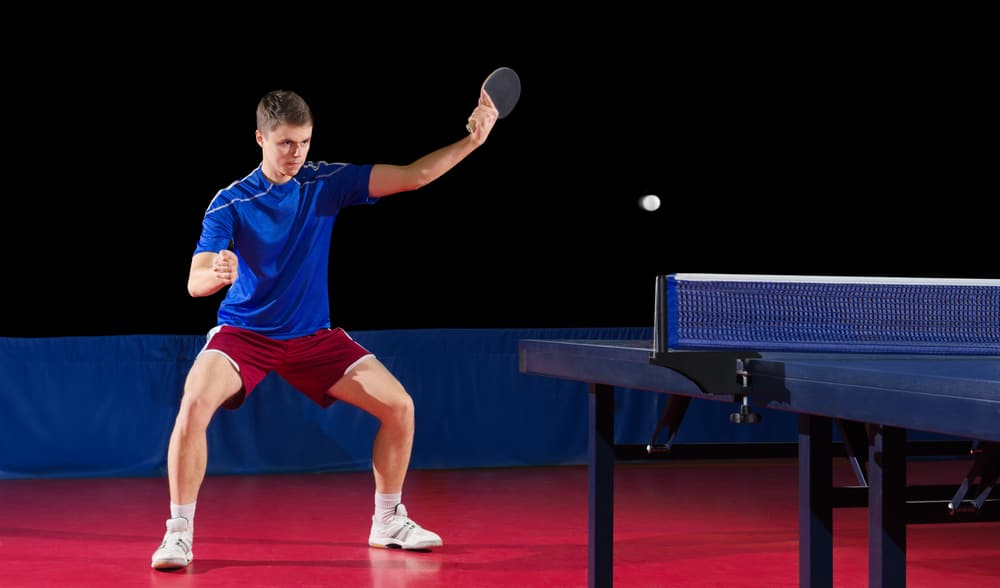
Identifying Advanced Visual Cues
So, what distinguishes the expert from the novice when deciphering spin in table tennis? Scientists like to talk about “advanced visual signals” and how experienced players may pick up on these and respond accordingly.
In table tennis, an expert will detect specific signals in their opponent’s service movement that reveal the spin imparted to the ball. Still, beginners would likely only watch the ball (oblivious to all the additional information available).
The trick is to understand what to concentrate on. However, I doubt that many skilled table tennis players deliberately addressed this. Their coach didn’t sit them down and say, “Listen here. When accepting service, pay attention to x, y, and z.”
Instead, they figured out what was vital by trial and error. It, in my opinion, is the most nuanced approach to learning – to physically go out and do it!
In fact, I doubt a professional player could explain the visual difference between a reverse pendulum serve with backspin and a reverse pendulum serve with topspin if you asked them directly. Or, at the very least, they wouldn’t be able to describe it adequately. But they recognize it when they see it! That’s all that matters.
The Trial And Error Method
Many people find that the trial and error technique of problem-solving is excellent for learning how to interpret spin serves in table tennis. Although specialists are adept at recognizing these complex visual clues, you want to develop this skill organically and intuitively. However, avoid becoming overly mindful and analytical in your approach.
So, instead of looking for “the secret,” commit to spending some significant time receiving spin serves from skilled table tennis players. Finding a person with spinny solid serves and asking them to serve to you for 10 minutes is probably the best thing you can do.
Allow them to serve as they like and then play the point out – that should keep them amused. After that, you have to concentrate on the serve and return. The remainder of the point is irrelevant. Play a game if they don’t want to do it. But, once again, don’t be concerned with the score. Instead, concentrate on the serve and return.
You could believe playing points or games won’t teach you much, but you’d be mistaken. Your capacity to learn is determined by your mental attitude to the activity rather than by the action itself. You won’t learn anything if you’re thinking about what you’ll eat for dinner when you get home, even if you’re practicing multiball with the finest coach in the world!
Pay special attention to what happens to the ball as you return your opponent’s serves. If it continues to shoot down and into the net, it certainly has a backspin. It is loaded with sidespin if carried off to the left or right. If you keep popping the ball up and having it pounded past you, that service has topspin.
Backspin will be returned well, sidespin serves will most likely be deflected off the table’s edge, and topspin serves will jump straight up. Continue to pay attention to what happens; after a while, you should be able to predict what will happen when you push.
Don’t expect to master it in 10 minutes against a single opponent. You will need to perform this exercise with a variety of different players until you are sure that you know when the ball will bite down or pop up.
A very kind opponent may even agree to offer you only one sort of service while varying the spin. They may, for example, serve 100% tomahawk serves, but some are sidespin and topspin, while others are sidespin and backspin. You could even pay for an hour of individual instruction and have the coach spend the time altering their serves in this binary manner for you.
Conclusion
Topspin, backspin, and sidespin are the three fundamental forms of spins. The mechanics behind each spin is almost identical: as the ball rotates in flight, changes in air pressure between the ball’s top, back, and sides cause the ball to curve and dip. When considering side spin, you will see that the ball moves to the left or right.
You will be able to identify the ideal way to deal with side spins in table tennis with time, practice, and the above procedures. Furthermore, remember that the goal of learning how to cope and deal with it is to study the outcome and effect of the spin. Some of the most popular and straightforward techniques of returning a side spin include angling your racket or returning the side spin with a backspin.
References
- https://www.quora.com/How-do-I-return-a-side-spin-serve-in-table-tennis
- https://www.youtube.com/watch?v=INB5icsr30c&ab_channel=PingSkills
- https://www.killerspin.com/blogs/four-table-tennis-shots-every-player-needs-to-master-the-game/tricks-to-understanding-spin-in-table-tennis-and-applying-it
- https://www.liveabout.com/table-tennis-backhand-backspin-sidespin-serve-3173894

